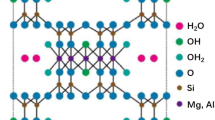Abstract
In this study, treatment sludge obtained from a chemical-metal finishing industry, which contained potentially toxic heavy metals and organics, was characterized, and the performance of the solidification/stabilization (S/S) of the sludge was discussed. The hazard characteristics of the waste were determined by means of extraction procedure toxicity test and DIN 38414-S4 Test, as defined in both Turkish and USEPA regulations. S/S studies were conducted using Portland cement to solidify the sludge containing high concentrations of total organic carbon, Cr, Cu, Hg, Ni, Pb, and Zn. The waste/binder ratios of 36 sludge specimens were kept between 0/100 and 40/100. The specimens were cured at room temperature for 7, 28, and 90 days. The compressive strengths of the specimens were measured to determine the feasibility of using solidified waste sludge as construction materials. The compressive strength values indicated that specimens could be potentially used as construction materials. The heavy metal and organic contents of the extracts of each specimen were detected in concentrations which were lower than the standard concentrations in EPTox and DIN 38414-S4 leaching procedures for the most part.




Similar content being viewed by others
References
APHA, AWWA, WPCF (1998) Standard methods for the examination of water and wastewater, 20th edn. American Public Health Association, Washington
Camacho LM, Munson-McGee SH (2006) Anomalous transient leaching behavior of metals solidified/stabilized by pozzolanic fly ash. J Hazard Mater 137(1):144–151
Chan YM, Agamuthu P, Mahalingam R (2000) Solidification and stabilization of asbestos waste from an automobile brake manufacturing facility using cement. J Hazard Mater B77:209–226
Cioffi R, Lavorgna M, Santoro L (2002) Environmental and technological effectiveness of a process for the stabilization of a galvanic sludge. J Hazard Mater B89(2–3):165–175
Cohen B, Cilliers JJ, Petrie JG (1997) Optimization of solidification/stabilization treatment of ferro-alloy waste products through factorial design. J Hazard Mater B54(3):175–188
Conner JR, Hoeffner SL (1998) A critical review of stabilization/solidification technology. Crit Rev Environ Sci Technol 28(4):397–462
Coz A, Andres A, Soriano S, Irabien A (2004) Environmental behaviour of stabilised foundry sludge. J Hazard Mater B109(1–3):95–104
Institut fur Normung (1984) DIN 38414 S4, German standard procedure for water, wastewater and sediment testing, group S sludge and sediment, determination of leachability S4. Institut fur Normung, Berlin
Institute of Turkish Standards (2002) TS EN 206/1, concrete: characteristic, performance, production and suitability, chap 1. Institute of Turkish Standards, Ankara (in Turkish)
Karamalidis AK, Voudrias EA (2007) Release of Zn, Ni, Cu, SO4 2− and CrO4 2− as a function of pH from cement-based stabilized/solidified refinery oily sludge and ash from incineration of oily sludge. J Hazard Mater 141(3):591–606
La Grega MD, Buckingham PL, Evans JC, The Environmental Resources Management Group (1994) Hazardous waste management. Mc Graw-Hill Inc, New York
Li XD, Poon CS, Sun H, Lo IMC, Kirk DW (2001) Heavy metal speciation and leaching behaviors in cement based solidified/stabilized waste materials. J Hazard Mater 82(3):215–230
Malviya R, Chaudhary R (2006) Leaching behavior and immobilization of heavy metals in solidified/stabilized products. J Hazard Mater 137(1):207–217
Ministry of Environment (1995) Turkish regulation on hazardous waste control. Ministry of Environment, Ankara
Ministry of Environment (2005) New regulation on hazardous waste control. Ministry of Environment, Ankara
Poon CS, Lio KW (1997) The limitation of the toxicity characteristic leaching procedure for evaluating cement-based stabilized/solidified waste forms. Waste Manage 17(1):15–23
Qian G, Cao Y, Chui P, Tay J (2006) Utilization of MSWI fly ash for stabilization/solidification of industrial waste sludge. J Hazard Mater 129(1–3):274–281
Silva MAR, Mater L, Souza-Sierra MM, Corrêa AXR, Sperb R, Radetski CM (2007) Small hazardous waste generators in develo** countries: use of stabilization/solidification process as an economic tool for metal wastewater treatment and appropriate sludge disposal. J Hazard Mater 147(3):986–990
Singh TS, Pant KK (2006) Solidification/stabilization of arsenic containing solid wastes using portland cement, fly ash and polymeric materials. J Hazard Mater 131(1–3):29–36
Stegemann JA, Cote PL (1996) A proposed protocol for evaluation of solidified wastes. Sci Total Environ 178(1–3):103–110
Tiruta-Barna L, Fantozzi-Merle C, de Brauer C, Barna R (2006) Leaching behaviour of low level organic pollutants contained in cement-based materials: experimental methodology and modelling approach. J Hazard Mater 138(2):331–342
USEPA (2002) Test methods for evaluating solid waste, physical/chemical methods, extraction procedure (EP) toxicity test method and structural integrity test, method 1310B, SW-846. USEPA, Washington DC
Vipulandan C, Krishnan S (1990) Solidification/stabilization of phenolic wastes with cementitious and polymeric materials. J Hazard Mater 24:123–136
Acknowledgments
The authors would like to express their appreciation and gratitude to YKS Degussa Turkey and Gebze Institute of Technology for allowing the authors to use their laboratory facilities.
Author information
Authors and Affiliations
Corresponding author
Rights and permissions
About this article
Cite this article
Bayar, S., Talinli, İ. Solidification/stabilization of hazardous waste sludge obtained from a chemical industry. Clean Techn Environ Policy 15, 157–165 (2013). https://doi.org/10.1007/s10098-012-0494-1
Received:
Accepted:
Published:
Issue Date:
DOI: https://doi.org/10.1007/s10098-012-0494-1




